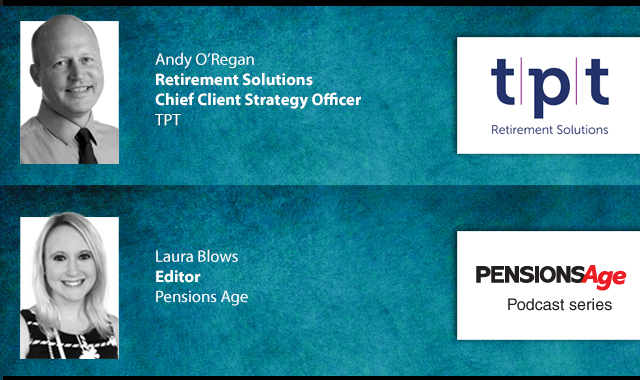Further automatic enrolment (AE) reforms, including the removal of the earnings trigger and a "rebalancing" of contributions, should be considered to ensure at-risk savers, such as women and lower earners, are not excluded from pension savings, industry experts have said.
Speaking at the TUC Pensions Conference, Prospect pension officer, Joe Anderson argued that the minimum earnings trigger should "definitely" be removed or reduced to help introduce more savers into automatic enrolment.
“One of the main reasons for that is a lot of people have more than one part-time job, and generally that’s women as well. They could be earning £30,000-40,000 a year in theory, but not being auto-enrolled because the current system isn’t really fit for purpose," he stated.
“I absolutely believe that there should be choice if people want to choose a different vehicle saving for retirement absolutely, but definitely I think that earnings trigger should be removed entirely or reduced.”
Adding to this, however, Resolution Foundation economist, Cara Pacitti, warned that reducing the minimum earnings threshold would make the role of labour market enforcement “even more important”.
She stated: “Where we have done work looking at labour market enforcement and labour market violations around AE, we’ve found that lower income workers are far less likely to be actually receiving the pension even if they are eligible for auto enrolment, or being underpaid.
"I think actually some of our work was suggesting that if you do push down that threshold it becomes even more important that your enforcing, that labour market enforcement becomes even more important."
Pensions Policy Institute (PPI) director, Chris Curry, also noted that there is a “danger” in lowering the threshold and enrolling those who perhaps cannot afford the contributions, and may not benefit from that income in retirement, potentially as a result of means testing for example.
“But we know that the introduction of the new state pension, the flat rate, and the reduction in means testing is making that a relatively smaller group," he clarified.
"I think on balance, given that people have the option to opt out if they cannot afford to make the contributions but they could still benefit If they continue making contributions from the employer as well, there's an opportunity for them to build up right the way through their working lives.
"It's something you need to look at very closely, and I'd hope it continues to be looked at every year."
He also noted that whilst are currently "very few people" under the earnings trigger who choose to opt in, there could "at some point in the future" be an increase in the number of savers actively choosing to do so, particularly as it becomes more normal for people to save in workplace pensions.
Despite these inadequacy concerns, Curry also stated that he was unsure whether there should be higher employer contributions specifically for lower earners, suggesting instead that there is an argument to increase employer contributions for all workers.
“I think in particular when we’re thinking about if there is going to be an increase in minimum contribution at some point in the future, obviously post-Covid and recovery from those kind of places, it would make much more sense to put any increase in pension contributions on the employer contribution than the employee contribution.
"The reason for that is not necessarily because its any more affordable for employers than it is for employees. But it does make a really big difference when you look at the incentives for people to stay in a pension or to opt out.
"I think the way in which you set up these structures and that split between the employer and employee contributions is really important in determining the overall outcome even if superficially it looks like it’s the same money going in the same way."
This was echoed by Anderson, who agreed that he was “not sure” about separating different segments of society in terms of different contribution levels, calling instead for a “real rebalancing of the contribution levels between employees and employers”.
Anderson also emphasised that strong employer contributions can represent a “real incentive” to join and remain with a pensions schemes.
Industry experts have previously expressed their disappointment that the government failed to include any AE reforms in the Spring Budget, despite a number of organisations repeatedly calling for the government to act on recommendations made in the 2017 review, such as the removal of the earnings trigger.
Experts had also emphasised the need for reform to protect those worst hit by the pandemic, with research further compounding this, after highlighting seven under-pensioned groups who could benefit from further AE reforms.
The Association of Consulting Actuaries has also recently called for a "refresh" of the AE system, having previously called for a number of reforms amid "very strong" employer support for change.
Latest News
-
Pensions dashboards one step closer to reality as first provider completes connection
-
Half of UK adults 'in the dark' about state pension entitlement
-
Countdown to the Pensions Age Spring Conference begins
-
Sainsbury's DB surplus rises to £731m following fall in liabilities
-
News in brief - 17 April 2025
-
This week in pensions: 14-17 April 2025
Being retirement ready
Gavin Lewis, Head of UK and Ireland Institutional at BlackRock, talks to Francesca Fabrizi about the BlackRock 2024 UK Read on Retirement report, 'Ready or not. How are we feeling about retirement?’
Time for CDI
Laura Blows speaks to AXA Investment Managers (AXA IM) senior portfolio manager for fixed income, Rob Price, about cashflow-driven investing (CDI) in Pensions Age’s latest video interview
The role of CDC

In the latest Pensions Age podcast, Laura Blows speaks to TPT Retirement Solutions Chief Client Strategy Officer, Andy O’Regan, about the role of collective DC (CDC) within the UK pensions space
Keeping on track

In the latest Pensions Age podcast, Sophie Smith talks to Pensions Dashboards Programme (PDP) principal, Chris Curry, about the latest pensions dashboards developments, and the work still needed to stay on track
© 2019 Perspective Publishing Privacy & Cookies















Recent Stories